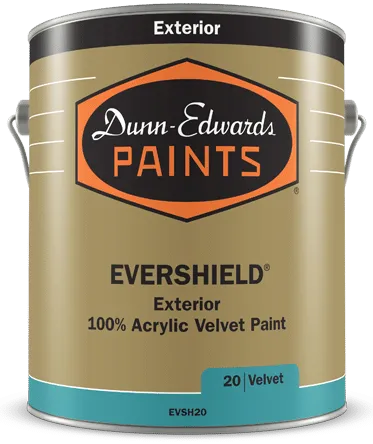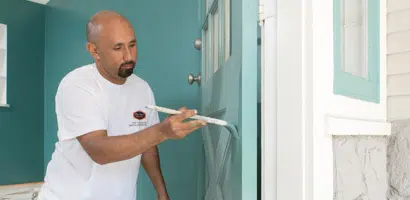Tips for Painting Success in Cooler Months
11/12/2018 | Dunn Edwards |

It’s true that we are blessed with mild fall and winter seasons here in the Southwest, which means the average temperatures throughout the region allow for painting year-round. That said, it’s important to be aware of the weather conditions as the cooler seasons approach — particularly if you work near the foothills, in a mountain community or in the desert. There are numerous factors that can affect late-season painting. It’s vital to look at the weather not only for the day you’re painting, but also before and after painting days. Here are a few things to keep in mind:
Daylight — It gets dark earlier in the evening during these cooler months, so be sure to schedule your jobs for earlier in the day.
Temperature and moisture — These conditions can greatly affect the success of a paint job — as well as your customers’ happiness. A few tips:
- Only order paint when you’re ready to apply. Try not to leave paint out overnight where it can be exposed to adverse conditions. Store it in a garage or warehouse, preferably at room temperature, instead. You can get your day jump-started early by ordering paint in advance with our Early-Bird service. This convenient program lets you pick up your order 30 minutes before stores open on weekdays — but just make sure you place the order before 3 p.m. the previous day.
- Avoid painting at least one full day after it rains.
- Check the surface. Does it feel cold or moist? Keep a heat gun or hair dryer nearby to warm and dry these surfaces, as it’ll make it easier to tape. Even if it doesn’t feel wet to the touch, it may be wet within — especially when painting porous surfaces such as bare wood and masonry.
- Moisture can collect overnight or in early evenings. It can even ruin an exterior job that was finished six or so hours earlier.
Wind — The Southwest is susceptible to the dry and strong Santa Ana and desert winds. For safety’s sake, if the winds are too high, do what’s best for you and reschedule the job — especially if the project you’re working on requires you to use a ladder.
Be flexible and help manage clients expectations — Let your customers know when you feel you might not be able to work a job because of inclement weather. Keep track of the conditions and manage their expectations by keeping them in the loop regarding when you’ll be able to complete the project. Most customers understand that the weather is out of your control. Other thoughts:
- Working in the mountains? Blocked roads can happen due to snow. Follow the local news for road closures and weather updates.
- When working on a job in the fall and winter, it’s recommended to begin on the east side of the house, where the sun rises. Avoid the north side in the early morning, as it is a colder area. Also, the best time to paint in cooler months is between 8 a.m. and 2 p.m. on a sunny day. This way, you create more time for the paint to dry before temperatures fall.
- Along the same lines, perhaps rethink your project plan by painting sections that are exposed to less moisture first (e.g., If you’re working on an interior/exterior project, paint the interior first, then the patio, then the exterior).
Product — When dealing with colder weather, it’s essential to understand how different paints and coatings perform at lower temperatures. Weather-related information about specific products can be found online.
- For example, the Product Data Sheet for EVERSHIELD® Ultra-Premium exterior paint states, “When the air temperature is at 35ºF, substrates may be colder prior to painting. Check to be sure the air, surface and material temperature are above 35ºF and at least 5ºF above the dew point. Avoid using if rain or snow is expected within two to three hours, as in colder temperatures, it may require a longer time before the paint film cures enough not to be affected by rain or snow. Do not apply at air or surface temperatures below 35ºF or when air or surface temperatures may drop below 35ºF within 48 hours.”
- In addition, it’s important to note that standard latex primers cannot be used below 50ºF. See the specific primer product information sheet for that product’s application conditions.
- If you’re using latex paint that has been through several freeze/thaw cycles, take a quick look to see if it has become lumpy. If it has, the paint is no longer usable and must be thrown out. Latex paints are formulated to withstand a few freeze/thaw cycles — but it doesn't take long for them to become unusable. Latex-based paint freezes at the same temperature as water, while oil-based paint is more resistant and won't freeze until it reaches lower temperatures.
For more information, read our Cold Weather Painting Technical Bulletin. As always, happy painting… and stay warm out there!















